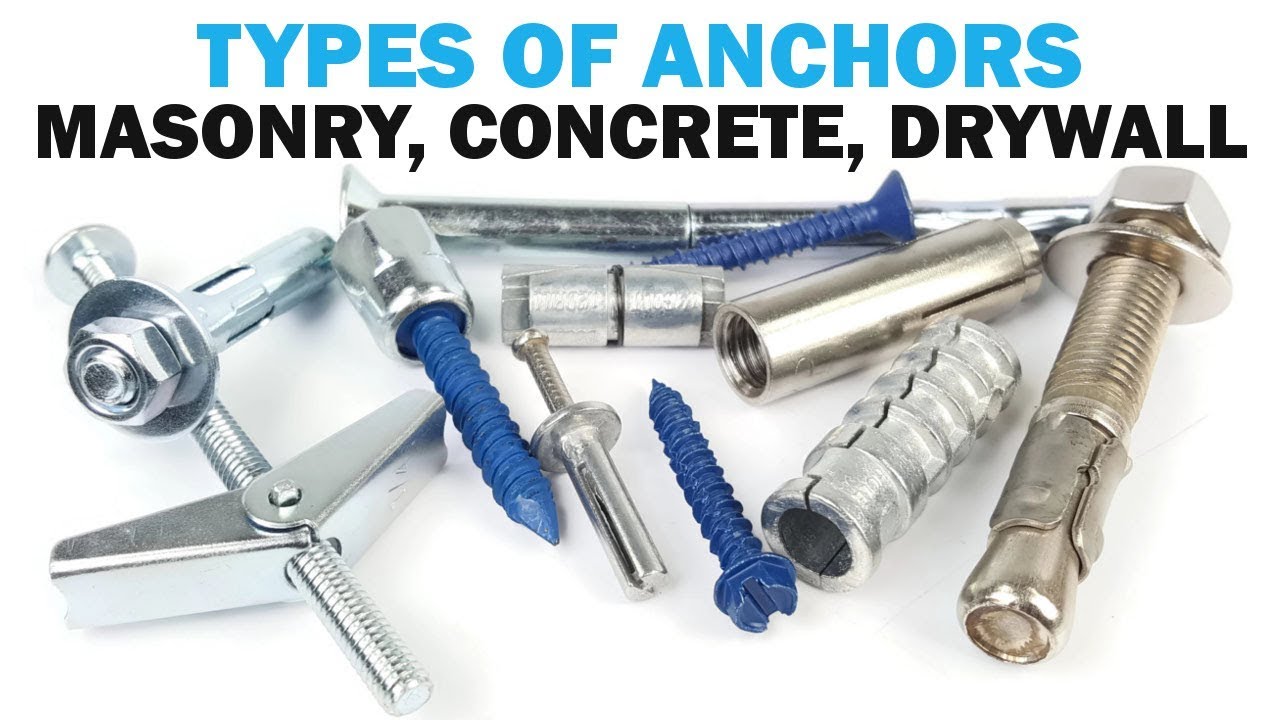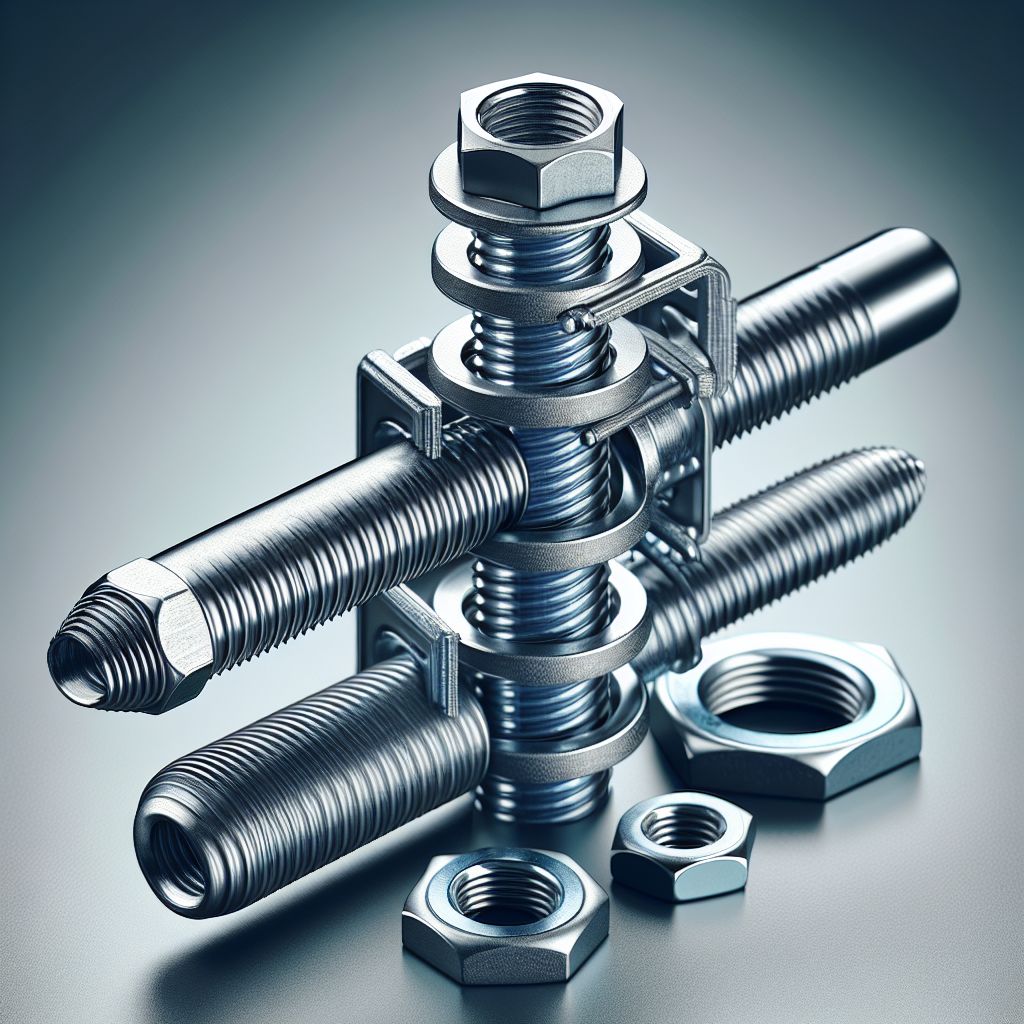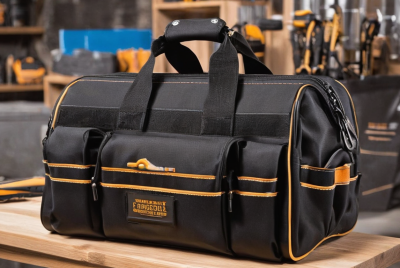Choosing Right Wedge Anchor System: Load Capacity Guide
Key Takeaways
-
Choosing the right wedge anchor depends on factors like material type, load capacity, and installation specifications.
-
Wedge anchors come in different materials, such as zinc-plated and stainless steel, each suited for specific environments.
-
Proper anchor sizing, including diameter and length, is crucial for ensuring load-bearing capacity.
-
Understanding the base material—whether concrete, brick, or stone—is essential for selecting a compatible wedge anchor.
-
Correct installation practices, such as proper drilling and embedment, significantly impact the anchor’s performance and safety.
Choosing Right Wedge Anchor System: Load Capacity Guide
Why Load Capacity Matters
When it comes to construction projects, understanding the load capacity of your wedge anchor is crucial. The load capacity determines how much weight the anchor can safely support. Selecting the wrong anchor can lead to structural failures, posing significant safety risks. Therefore, it’s essential to know how to choose the right wedge anchor to ensure your project’s success.
The Basics of Wedge Anchor Systems
Wedge anchors are mechanical fasteners used to secure objects to concrete and masonry surfaces. They consist of a threaded bolt, a clip, and a nut. When installed, the clip expands and grips the concrete, providing a secure hold. These anchors are known for their high load-bearing capacity and reliability.
Components of a Wedge Anchor
Understanding the components of a wedge anchor helps in selecting the right one for your needs. The main components include:
-
Threaded Bolt: The primary part that holds the load.
-
Clip: Expands to grip the concrete when the bolt is tightened.
-
Nut: Secures the bolt in place.
How Wedge Anchors Work
Wedge anchors work by expanding the clip when the bolt is tightened. This expansion creates a strong grip within the drilled hole in the concrete. The anchor’s load capacity depends on the diameter of the bolt, the length of the thread, and the type of material used for the anchor.

“Masonry Anchors | Fasteners …” from www.youtube.com
Factors to Consider When Choosing Wedge Anchors
Material Type
Choosing the right material for your wedge anchor is essential. The two most common materials are zinc-plated carbon steel and stainless steel. Each material has its advantages and is suited for different environments. For more information, check out this guide on choosing the correct wedge anchor.
Indoor vs. Outdoor Use
When selecting a wedge anchor, consider whether your project is indoors or outdoors. Zinc-plated anchors are ideal for dry indoor environments, while stainless steel anchors are better for outdoor or corrosive environments.
Zinc-Plated vs. Stainless Steel
“Zinc-plated wedge anchors are suitable for use in dry indoor environments, while externally threaded stainless steel anchors are recommended for outdoor or corrosive environments.”
Zinc-plated anchors are more affordable but may corrode over time if exposed to moisture. Stainless steel anchors are more expensive but offer superior corrosion resistance, making them ideal for outdoor applications.
Anchor Size
The size of the wedge anchor, including its diameter and length, plays a crucial role in its load-bearing capacity. Larger diameters and longer lengths generally offer higher load capacities. For more on storage solutions, check out our comparison of wall-mounted shelving units.
Diameter and Length
The diameter of the anchor affects its grip strength, while the length determines how deeply it can be embedded in the concrete. Both factors are essential for ensuring the anchor can support the required load.
Thread Length
The thread length of the anchor determines how much of the bolt can be engaged with the nut. Adequate thread length is necessary for achieving the desired load capacity.
Base Material Compatibility
The base material where the wedge anchor will be installed is another critical factor. Different materials require different types of anchors to ensure a secure hold.
Concrete
Concrete is the most common base material for wedge anchors. When selecting an anchor for concrete, ensure it is designed specifically for this material to achieve optimal performance.
Load Requirements
Understanding load requirements is essential for selecting the right wedge anchor. The load requirement refers to the maximum weight or force that the anchor must support. To determine this, consider the weight of the object being secured, additional forces that may act on it, and any safety factors. For instance, if you’re securing a heavy piece of machinery, you’ll need an anchor with a high load capacity to handle not just the machine’s weight but also any dynamic forces, like vibrations.
Before purchasing, calculate the load requirements meticulously. This involves assessing the dead load (static weight), live load (variable weight), and any environmental factors such as wind or seismic activity. Consulting with a structural engineer can provide a more accurate assessment tailored to your specific project needs.
Safety Factors
Safety factors are multipliers used to ensure that the wedge anchor can handle more than the calculated load. This accounts for uncertainties in load estimations, material defects, and installation errors. Typically, a safety factor of 4 to 6 is used for most construction projects. This means if your calculated load requirement is 500 lbs, you should select an anchor with a load capacity of at least 2000 lbs.
Implementing appropriate safety factors ensures that the anchor performs reliably under unexpected conditions. It’s a crucial step in maintaining the structural integrity and safety of your project. For more information on choosing the correct anchor, visit this guide on wedge anchors.
Allowable Stress Design (ASD) Method
The Allowable Stress Design (ASD) method is a traditional approach used to ensure that the stresses on a wedge anchor do not exceed a specified allowable limit. This method involves dividing the load by the safety factor to determine the allowable load. For example, if the load requirement is 1000 lbs and the safety factor is 4, the allowable load would be 250 lbs. For more information, you can visit wedge anchor technical specifications.
This method is straightforward and provides a conservative estimate, ensuring that the anchor will perform well under normal conditions. However, it’s essential to consider all potential loads and forces that the anchor may encounter during its lifespan.
Anchor Spacing and Edge Distance
Proper anchor spacing and edge distance are critical for maintaining the structural integrity of the base material. Spacing refers to the distance between adjacent anchors, while edge distance is the distance from the anchor to the edge of the base material.
Incorrect spacing can lead to concrete cracking and reduced load capacity. As a general rule, maintain a minimum spacing of 10 times the diameter of the anchor and an edge distance of at least 5 times the diameter. For instance, for a 1/2-inch diameter anchor, the minimum spacing should be 5 inches, and the edge distance should be 2.5 inches.
Impact on Load Capacity
Both anchor spacing and edge distance significantly impact the load capacity of a wedge anchor. Insufficient spacing can lead to stress concentrations and potential failure of the concrete. Similarly, inadequate edge distance can cause the concrete to crack, reducing the anchor’s load-bearing capacity.
Therefore, always adhere to the recommended spacing and edge distance guidelines provided by the anchor manufacturer. This ensures that the anchor can achieve its maximum load capacity and maintain the structural integrity of the base material.
Minimum Embedment
Minimum embedment refers to the depth at which the wedge anchor must be installed to achieve its rated load capacity. This depth ensures that the anchor has sufficient material to grip and distribute the load effectively. For example, a 3/8-inch diameter anchor typically requires a minimum embedment of 1-1/2 inches.
Failing to achieve the minimum embedment can significantly reduce the anchor’s load capacity and compromise the safety of the installation. Always follow the manufacturer’s recommendations for minimum embedment to ensure optimal performance. For more tips on maintaining safety and performance, check out our usage and maintenance guide.
Comparing Load Capacities of Different Wedge Anchors
Wedge anchors come in various materials and sizes, each with different load capacities. Understanding these differences helps in selecting the right anchor for your project. Let’s compare the load capacities of zinc-plated and stainless steel wedge anchors.
Zinc-Plated Wedge Anchors
Zinc-plated wedge anchors are commonly used for indoor applications where moisture and corrosion are not significant concerns. These anchors are affordable and provide adequate load capacity for most indoor projects.
Optimal Environments
Zinc-plated anchors are best suited for dry indoor environments. They offer good load-bearing capacity and are resistant to moderate wear and tear. However, they are not recommended for outdoor or corrosive environments due to their susceptibility to rust and corrosion.
Load Range
The load capacity of zinc-plated wedge anchors varies based on their size. Here’s a comparison of different sizes:
|
Diameter |
Length |
Load Capacity (lbs) |
|---|---|---|
|
1/4 inch |
1-3/4 inches |
500 lbs |
|
3/8 inch |
3 inches |
1200 lbs |
|
1/2 inch |
3-3/4 inches |
2000 lbs |
These values provide a general guideline, but always refer to the manufacturer’s specifications for precise load capacities.
Stainless Steel Wedge Anchors
Stainless steel wedge anchors are designed for outdoor and corrosive environments. They offer superior corrosion resistance and are ideal for projects exposed to moisture, chemicals, or extreme weather conditions.
Corrosive Environments
Stainless steel anchors are the best choice for outdoor applications and environments where corrosion is a concern. They maintain their load capacity and integrity even when exposed to harsh conditions, making them suitable for marine, industrial, and coastal applications.
Load Range
The load capacity of stainless steel wedge anchors also varies based on their size. For more information on optimizing storage solutions, you might find this guide on motorized overhead garage storage racks useful. Here’s a comparison of different sizes:
|
Diameter |
Length |
Load Capacity (lbs) |
|---|---|---|
|
1/4 inch |
1-3/4 inches |
450 lbs |
|
3/8 inch |
3 inches |
1100 lbs |
|
1/2 inch |
3-3/4 inches |
1800 lbs |
Again, these values are general guidelines. Always consult the manufacturer’s specifications for accurate load capacities. For more tips on optimizing your garage space, check out this garage storage organizing guide.
Using the Load Capacity Guide in Real-Life Projects
Applying this load capacity guide in real-life projects ensures that your wedge anchors perform optimally and maintain the safety and integrity of your structures. Let’s explore some common applications and best practices.
Common Applications
Wedge anchors are versatile and used in various construction projects. Some common applications include:
-
Securing Machinery: Wedge anchors provide a robust hold for heavy machinery, ensuring stability and safety.
-
Attaching Structural Supports: They are used to attach beams, columns, and other structural supports to concrete surfaces.
-
Installing Railings and Guardrails: Wedge anchors offer a secure attachment for railings and guardrails, enhancing safety in buildings and public spaces.
Installation Best Practices
Proper installation is crucial for achieving the desired load capacity and ensuring the safety of your project. Follow these best practices for installing wedge anchors:
Proper Drilling Techniques
Drilling the correct hole size and depth is essential for proper anchor installation. Use a hammer drill with a carbide-tipped drill bit to achieve clean, accurate holes. Ensure the hole is free of debris before inserting the anchor.
Tightening and Load Testing
After inserting the anchor, tighten the nut to expand the clip and secure the anchor in place. Perform load testing to verify that the anchor can sustain the required load. This step ensures that the anchor is installed correctly and will perform as expected.
Conclusion
Choosing the right wedge anchor system and understanding its load capacity is essential for the success and safety of your construction projects. By considering factors such as material type, load requirements, and proper installation practices, you can ensure that your wedge anchors provide a secure and reliable hold.
Frequently Asked Questions (FAQ)
What is a wedge anchor?
A wedge anchor is a type of mechanical fastener used to secure objects to concrete and masonry surfaces. It consists of a threaded bolt, a clip, and a nut. When the bolt is tightened, the clip expands and grips the concrete, providing a secure hold.
How do I determine the right size of wedge anchor for my project?
To determine the right size, consider the load requirements, the diameter and length of the anchor, and the minimum embedment depth. Use the manufacturer’s specifications and guidelines to select an anchor that meets your project’s needs.
Why is anchor spacing and edge distance important?
Proper anchor spacing and edge distance are crucial for maintaining the structural integrity of the base material. Incorrect spacing can lead to concrete cracking and reduced load capacity. Adhere to the recommended guidelines to ensure optimal performance.
Can wedge anchors be used in all types of base materials?
Wedge anchors are designed for use in solid concrete. While they can be used in other base materials like brick or stone, it’s essential to select an anchor specifically designed for those materials to ensure a secure hold. For instance, when organizing your garage, using the Rubbermaid FastTrack system can help you achieve a secure and clutter-free space.
Using the Load Capacity Guide in Real-Life Projects
Applying this load capacity guide in real-life projects ensures that your wedge anchors perform optimally and maintain the safety and integrity of your structures. Let’s explore some common applications and best practices.
Common Applications
Wedge anchors are versatile and used in various construction projects. Some common applications include:
-
Securing Machinery: Wedge anchors provide a robust hold for heavy machinery, ensuring stability and safety.
-
Attaching Structural Supports: They are used to attach beams, columns, and other structural supports to concrete surfaces.
-
Installing Railings and Guardrails: Wedge anchors offer a secure attachment for railings and guardrails, enhancing safety in buildings and public spaces.
Securing Machinery
Securing machinery with wedge anchors requires careful planning and execution. First, determine the weight of the machinery and any additional forces that may act on it, such as vibrations. Select a wedge anchor with a load capacity that exceeds these requirements, factoring in a safety margin. Ensure proper spacing and embedment to distribute the load evenly and prevent concrete cracking.
Attaching Structural Supports
When attaching structural supports like beams and columns, the load capacity of the wedge anchor must be sufficient to handle the weight and any additional forces. Use multiple anchors to distribute the load and adhere to the recommended spacing and edge distance guidelines. Proper installation ensures the stability and integrity of the structure.
Installation Best Practices
Proper installation is crucial for achieving the desired load capacity and ensuring the safety of your project. Follow these best practices for installing wedge anchors:
Proper Drilling Techniques
Drilling the correct hole size and depth is essential for proper anchor installation. Use a hammer drill with a carbide-tipped drill bit to achieve clean, accurate holes. Ensure the hole is free of debris before inserting the anchor. The hole diameter should match the anchor diameter, and the depth should be at least the minimum embedment specified by the manufacturer.
Tightening and Load Testing
After inserting the anchor, tighten the nut to expand the clip and secure the anchor in place. Perform load testing to verify that the anchor can sustain the required load. This step ensures that the anchor is installed correctly and will perform as expected. Load testing involves applying a force to the anchor and measuring its resistance to ensure it meets the specified load capacity.
Conclusion
Choosing the right wedge anchor system and understanding its load capacity is essential for the success and safety of your construction projects. By considering factors such as material type, load requirements, and proper installation practices, you can ensure that your wedge anchors provide a secure and reliable hold. For more tips on organizing your tools and workspace, check out this garage storage organizing guide.
Final Considerations for Choosing the Right Wedge Anchor System
When selecting a wedge anchor, always consider the specific requirements of your project, including the type of base material, environmental conditions, and load requirements. Consult with a structural engineer if needed to ensure you select the appropriate anchor. Proper installation and adherence to manufacturer guidelines are crucial for achieving optimal performance and safety.
Frequently Asked Questions (FAQ)
What is a wedge anchor?
A wedge anchor is a type of mechanical fastener used to secure objects to concrete and masonry surfaces. It consists of a threaded bolt, a clip, and a nut. When the bolt is tightened, the clip expands and grips the concrete, providing a secure hold.
How do I determine the right size of wedge anchor for my project?
To determine the right size, consider the load requirements, the diameter and length of the anchor, and the minimum embedment depth. Use the manufacturer’s specifications and guidelines to select an anchor that meets your project’s needs.
Why is anchor spacing and edge distance important?
Proper anchor spacing and edge distance are crucial for maintaining the structural integrity of the base material. Incorrect spacing can lead to concrete cracking and reduced load capacity. Adhere to the recommended guidelines to ensure optimal performance.
*We may earn a commission for purchases made using our links. Please see our Disclosure to learn more.




